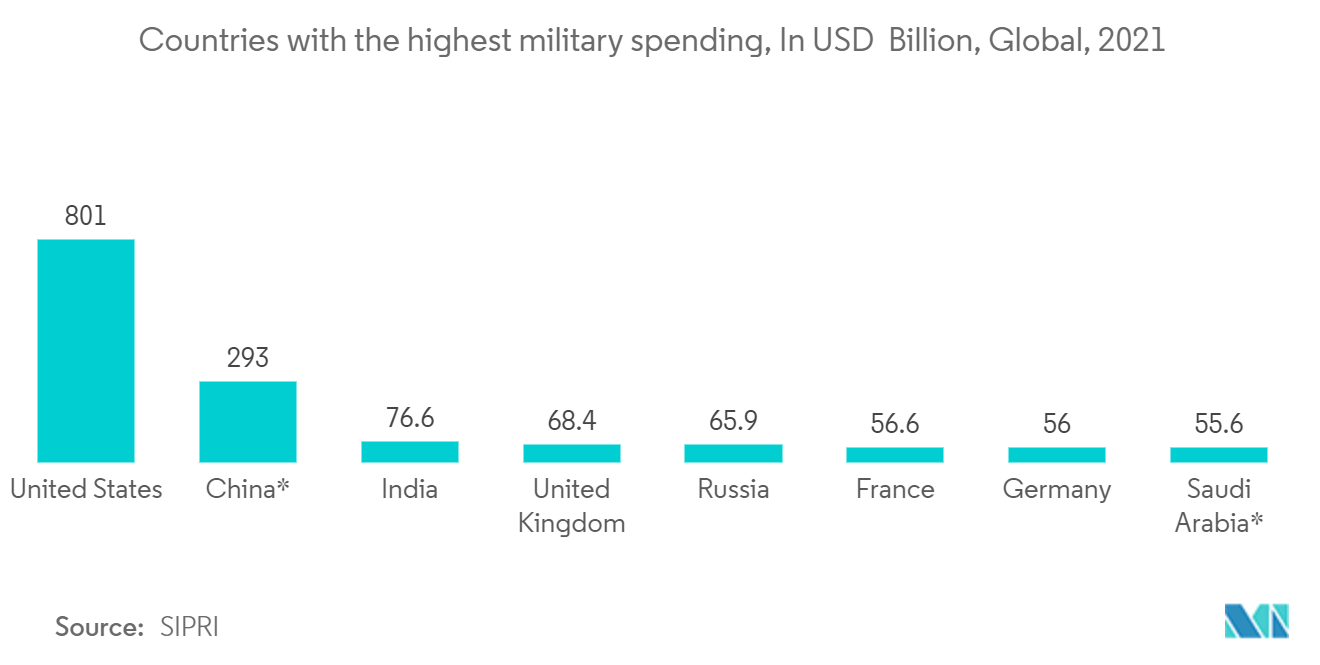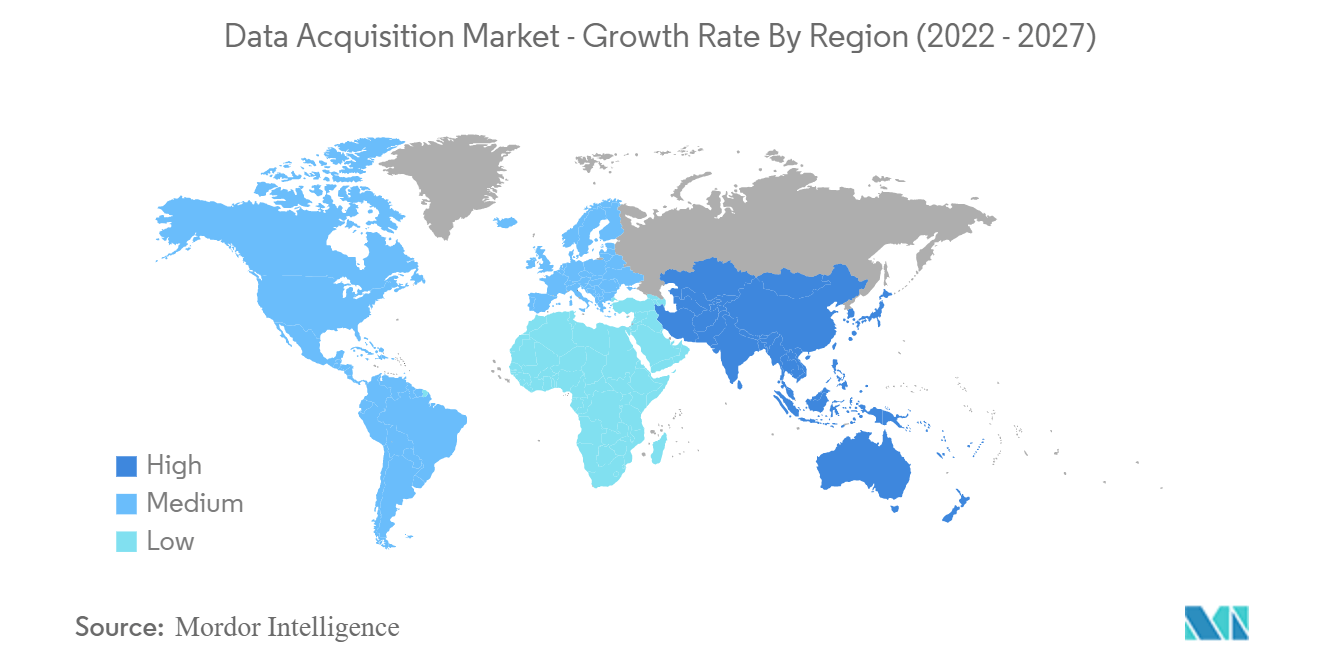Market Trends of Data Acquisition Industry
This section covers the major market trends shaping the Data Acquisition Market according to our research experts:
Aerospace and Defense Accounts for Significant Share in the Market
- The development of efficient space exploration devices elevates the demand for data acquisition systems that enable safer and better-managed journeys. Startups in the sector, such as SpaceX and BlueOrigin, have been consistent with work in the establishment of efficient, interconnected systems. In August 2021, SpaceX acquired the satellite data startup Swarm Technologies to consolidate their 120 SpaceBee satellites in orbit, furthering their data acquisition initiatives and expanding their star-link infrastructure.
- The DDS was employed to present data from the P&V system, 32 IP cameras, eight microphones, and the DAS to observe the test in progress. GUIs are used complementarily to view real-time progress or retrieve past test data. The tandem operations of the three systems allow engineers to replicate real-world scenarios and encourage more detailed simulation of capabilities needed to complete early-stage structural tests.
- Not all collaborations in aerospace have been dedicated to space exploration. Increasing sensitivity of sensors and data analysis systems have projected the growth of Space Observation initiatives. In July 2021, Spire Global announced the continuation of its participation in NASA's Commercial Small-sat Data Acquisition (CSDA) program with a USD 6 million contract extension. The contract includes Task Order 6 (TO6), a subscription data solution that provides for radio occultation (RO) data, soil moisture, precise orbit determination (POD) data, grazing angle GNSS-RO, total electron content (TEC) data, ocean surface wind speed GNSS-Reflectometry data, and magnetometer data acquisition. The data is made available to all federal agencies, NASA-funded researchers, and all US government-funded researchers for scientific purposes.
- NASA stated the positives that the Spire data has enabled, primarily its GEOS Atmospheric Data Assimilation System, which utilizes space-based data to analyze the earth's atmosphere and integrate it into its earth observation systems. Furthermore, NASA has employed Spire data in research on water and sea ice levels in the polar regions, the Planetary Boundary Layer's height (PBL) height, and the day-to-day variability of thermospheric density at flight level.

North America Presently Holds the Largest Market Share
- The North American market for data acquisition has been growing significantly, with players such as National Instruments, Keysight, Tektronix, and Siemens, accounting for over 35% of the market. However, increasing demand for intelligent manufacturing through Industrial Internet of Things (IIoT) architectures has been made achievable by selecting the appropriate hardware and software. The region is highly depictive of adopting faster means of production with errorless outcomes.
- On average, the manufacturers spent nearly 80% of their time handling the architecture and data acquisition. With the remaining 20% left for data analysis, adopting IIoT can help lower the time spent on data acquisition. This requires a mainstream adoption of IIoT in the region. To build an IIoT ecosystem, the vendors have taken several measures. For instance, National Instruments with Cisco, Intel, and others created an IIoT Lab. Additionally, IoT is significant throughout supply chains.
- Moreover, the United States has been one of the leading automotive markets in the world and is home to over 13 major automobile manufacturers. The automotive manufacturing industry has been one of the largest revenue generators for the country in the manufacturing sector.
- Industrial automation is the primary driving factor expected to drive the demand for DAQ systems. The increasing adoption of controlling processes without human interference relies heavily on data to provide instructions. Hence, any minor misdirection may lead to drastic losses to the industry.
- Efficient data acquisition has become a core component of any vehicle to provide accurate data regarding its working to ensure compliance with any regulation and maintain a sense of oversight over any operations. Since the Volkswagen scandal regarding its emissions, user needs have emerged from a reliability standpoint, and compliance with other systems and system functions, such as DCSs and operation and monitoring functions, has become a priority.


